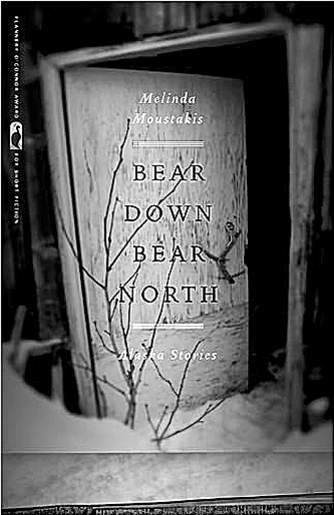Author finds fish, stories in Alaska
Published 5:00 am Sunday, August 14, 2011

- Melinda Moustakis fishes on Skilak Lake in Alaska. Her book “Bear Down, Bear North: Alaska Stories” will be published in September. It is a collection of 13 stories based on family lore.
“Bear Down, Bear North:
Alaska Stories” by Melinda Moustakis (University of Georgia Press, 144 pgs., $24.95)
ANCHORAGE, Alaska — It took 10 years of nonstop classes, workshops and study for Melinda Moustakis to earn her Ph.D in writing.
In the process, she had work published in serious literary journals around the country and picked up one of the most coveted prizes in American literature, the 2011 Flannery O’Connor Award for Short Fiction.
Her first book, “Bear Down, Bear North: Alaska Stories,” will be published in September. She has a string of talks and signings planned that will take her from Anchorage to Bakersfield, Calif.
She’s about to start a year as a visiting professor at Pacific Lutheran University in Tacoma, Wash.
An impressive resume for a writer who is not yet 30.
But she would rather be fishing.
On a sunny July day she stood on the bow of a boat in the middle of the Kenai River, cocked her pink rod and sent a flesh-colored fly zipping over the glacial gray water.
“Coming up here to fish is how I got through so much school,” said Moustakis, who finally received her doctorate from Western Michigan University in 2010.
Her pilgrimages to the Kenai weren’t mere fishing trips, however. They were also her chance to troll for the family lore that fills her tales.
History
Moustakis was born in Fairbanks in 1982. She was 5 when her parents moved to California, where she grew up. But she heard of the homestead years, the moose hunts, outhouses and family history from them and — largely, she said — from her uncle, Sonny Traxinger.
Traxinger, one of nine children of Point MacKenzie pioneers, has a national reputation as an expert fisherman. He’s also a natural-born storyteller.
“Listening to fishing banter and my Uncle Sonny’s stories taught me how to write dialogue,” Moustakis said.
His fish camp on an island upriver from Bing’s Landing near Sterling is where she stays on her visits back to Alaska. Every second, 10,000 gallons of fish-friendly water flow by his wobbly dock. Moose amble in front of the porch. An eagle nest sits 30 feet overhead.
The antler-decorated 24-by-16 foot cabin brims with memorabilia, hand-made furniture, old ammo boxes, plaques and curios. The tidy outhouse boasts a touch of wallpaper, an automatic deodorizer and a cheetah-print seat lid.
“There’s a story behind a lot of our stuff here,” Traxinger said.
The skill with which she conveys such stories has brought Moustakis serious national attention.
“Here is a writer who truly has everything,” said National Book Award winner Jaimy Gordon, “clean and radiant prose; unforgettable characters; formal designs for story after story that are innovative yet utterly readable.”
Author Stuart Dybek, recipient of a MacArthur “genius” fellowship, likens her work to that of Mark Twain, Eudora Welty, William Faulkner and other such members of literature’s wall of fame.
Traxinger’s cabin also has a wall of fame, a line of photos of grinning friends and family holding trophy rainbow trout.
“My goal in life is to be on that wall,” Moustakis said.
13 tales
The 13 stories in “Bear Down” are linked by a multi-generational clan of homesteaders, their children, their cousins and their children’s children. While these characters are not synonymous with her own relatives, there is a connection.
“I’m reimagining family mythologies,” Moustakis explained. She refers to the moody style as “Northern Gothic.”
Using a series of quick micro-chapters — an approach sometimes called “modular fiction” — Moustakis jumps between past and present in collages of verbal snapshots that crowd upon each other to create an indelible mood and characters as focused and real as those in John Steinbeck’s novels.
Except that “Bear Down” reads like Steinbeck in haiku. Moustakis likens fishing jargon to poetry and said that poetry was her first love. In some paragraphs the sentences, if arranged in columns, would look like a poem.
Here, for example, are all 55 words of one micro-chapter in “The Find the Drowned, one of the book’s stories:
“Rainbows are the shimmering litmus, the indicator fish. If anything goes wrong in the Kenai, the rainbows tell the scientists. If there is pollution, they die. If the temperature changes too much, they die. If a feeder stream stops feeding, they die. Kiss a rainbow, the scientists say, and you’ll know all the river’s secrets.”
Human secrets, though, occupy the heart of the book’s tales. In revealing those secrets, Moustakis jigs between the viewpoints of multiple characters. Sometimes she puts the narrative in the unusual but intimate second person, as in “The Weight of You”:
“You’re the little sister and he’s the big brother, but the word ‘big’ doesn’t even come close to what he is. … You shared a room in the house on Bragaw Street. Foil over the windows to keep out the summer sun. A ball of foil, wide as a dinner plate, hanging from the ceiling, and when the bruising sounds from the living room got too loud, he’d shine a flashlight on it and say, ‘Tell me about the moon, Gracie …’ .”
On July 18, Moustakis reeled in a 52-pound king salmon. Two days later, she served some of it as smoked salmon spread to her uncle and his guests. Then they rigged their fly rods and headed upriver for rainbow trout.
She’d like to be a full-time university professor. And of course she has more writing in her immediate future. “Some of these characters,” she said, “I’m not done with them yet.”
“My lifetime goal is to own a cabin on the Kenai River,” Moustakis said.




